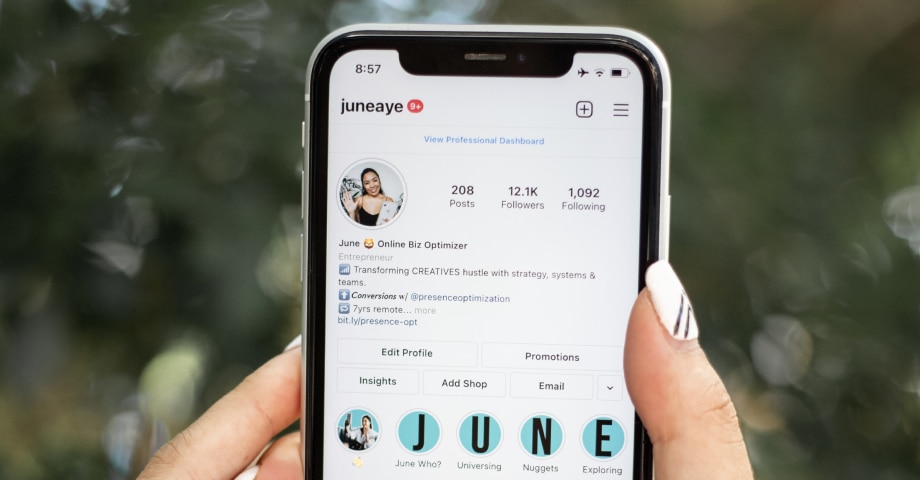A profile has one job – point busy thumbs to the next clean step. On mobile, that step is usually a tap to a page that loads fast, says what the app does in plain words, and starts the install without drama. The hook lives in the first 100 characters of the bio and the line above the link. The rest should remove doubt: a short proof (rating, press, or stat), one promise in everyday language, and a hint of what happens after the tap. This setup keeps attention on the action instead of on layout tricks. It also lets teams test changes without guesswork, because each part has a purpose and a metric that shows if it works.
Contents
A Profile-to-Install Flow That Actually Works
A good flow starts before the tap – with a bio that sounds human, a link that’s easy to hit, and a path that feels safe on slow networks. The first line should say the app’s main value in eight to twelve words. The second line earns trust with one real marker: rating, trusted partner, or privacy note. The call-to-action stays short – “Get the app” or “Start in seconds” – and sits right above the link, so eyes do not travel. After the tap, the landing screen should load in under two seconds, show platform buttons right away, and repeat the same value line so the mind doesn’t have to reframe the pitch.
Clear naming helps with recall and safety. Many audiences search for phrases like parimatch mobile app download because a direct label feels safer than a vague “Get started.” Use this insight without hype: match bio copy and landing headers so wording stays the same from profile to page. Show a short checklist under the buttons – device support, data size, and a no-surprise note about permissions – then keep the rest of the page light. This protects impatient sessions and lets first-time visitors feel in control. The simple rule holds across niches – say what it is, show where to get it, and remove the doubts that slow a thumb.
One Checklist To Make Your Bio Install-Ready
- Value in one breath – then a promise you can keep. The first sentence names the result in plain words, not a slogan. Keep it specific: “Track split bills in three taps” beats “Manage money better.” Follow with a promise that fits daily life – “Works offline on trips” or “No account needed to start.” This pairing sets clear expectations before any tap. It cuts bounce on the landing screen because visitors already know what they’re about to see. Keep verbs short, avoid jargon, and end the line on the strongest word so the eye stops where meaning is clear.
- Link that looks safe – and lands where eyes expect. Place one link. Use a readable slug that matches the promise so people feel sure they’re in the right place. The line above the link should tell the job – “Install on iOS/Android – fast, light, secure.” On tap, show store buttons at the top, repeat the value line, and keep art small so phones on weak signal do not stall. Remove pop-ups on the first visit. If a badge or rating exists, place it near the buttons for a quick trust lift. All of this shortens time-to-first-tap and raises confirmed installations without adding noise.
- Proof that fits a phone – and a calm tone. Proof works when it is real and tiny: “4.6★ from 18k reviews,” “Featured by X,” or “10M installs.” Avoid full banners that push buttons below the fold. If privacy is a worry, add one line where eyes land – “No contact list access.” When a flow names what it will and won’t do, fewer visitors bounce after the store opens. Use the same words across bio, story highlights, and the landing page so memory has one shape. People decide fast. A calm, steady tone keeps trust high during those fast choices.
Onboarding That Doesn’t Lose The Win
Many teams celebrate the tap and forget the next minute. A good installation is wasted if onboarding adds friction. The first screen after open should answer three things at once – what to enter, what happens next, and how to back out without harm. Labels sit above fields, so text stays visible while typing. One primary action per screen keeps focus. If a permission is needed, say why in plain words and offer a “Not now” path. This reduces early exits and protects ratings. If a code or link is sent, tell where it goes and how long it takes. Silence feels like failure; a ten-word status line keeps calm and cuts retries that break analytics.
Make The Close Feel Easy – And Honest
A profile that sends people to a smooth install feels like a friend, not a funnel. The closing pieces are simple – one steady voice across bio, stories, and the landing page; a link that never moves; and a short recap in highlights that shows what’s new this month. Measure three things weekly: tap-through from bio, store page conversions, and first-day activation. When all three rise together, keep the change. When one lags, fix the closest step in the path before trying a new message. This approach is boring in the best way. It respects time, removes doubt, and lets visitors start fast – which is why it keeps working when feeds are loud and attention is thin.
